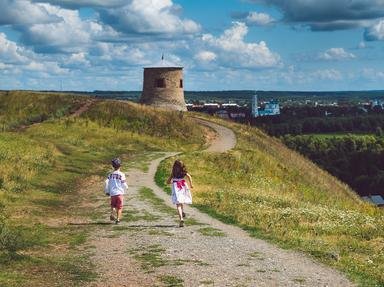Quiz Answer Key and Fun Facts
1. Most of Egypt is desert, so people living there depended on a river for water to drink and grow their crops. What is the name of this river?
2. The ancient Egyptians were ruled by kings who were called pharaohs. There was one pharaoh named Hatshepsut. What was unusual about Hatshepsut?
3. One early pharaoh named Khufu wanted to build himself the greatest tomb the world had ever seen. Even though it was built over 4,500 years ago, it is still standing. It has sloping sides that come to a point at the top. What is it called?
4. The ancient Egyptians enjoyed eating, just like we do. If you had lived in ancient Egypt, which of these foods might you have eaten?
5. The Egyptians had a special way of writing that involved pictures called hieroglyphs. For a long time, no one could read this writing. Then something was discovered that allowed hieroglyphs to be translated. What was it?
6. Is ancient Egypt mentioned in the Bible?
7. The Egyptians had a substance a lot like paper that they used to write on. It was made from plants and used to record all kinds of things, like medical treatments, legal records, and even stories. What do we call this ancient Egyptian invention?
8. The ancient Egyptians believed that it was important to preserve the body after death. It would be dried out, rubbed with spices and ointments, and wrapped in linen bandages. What are these dead Egyptians called?
9. Perhaps the most famous pharaoh is one who became king when he was only about nine years old, and died when he was around 18. His tomb was found in 1922 by a man named Howard Carter, and today he is famous all over the world. What is this pharaoh's name?
10. The ancient Egyptian civilization lasted for thousands of years, but eventually it came to an end. The last pharaoh was not a man, but a woman. She is said to have ended her life by letting a snake bite her when her army was defeated by the Romans. What was her name?
Source: Author
daver852
This quiz was reviewed by FunTrivia editor
NatalieW before going online.
Any errors found in FunTrivia content are routinely corrected through our feedback system.


